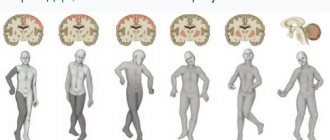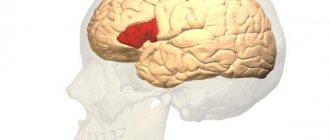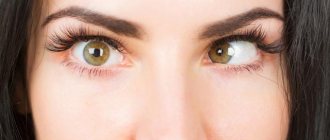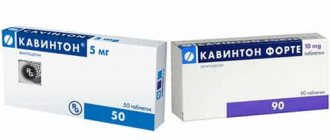Prevention of neurological diseases
– an important and significant part of a healthy lifestyle. The list of pathologies of the nervous system is quite extensive, but the provoking factors in most cases are the same. Therefore, every person who wants to maintain physical and mental activity for many years needs to know and avoid them.
Today, the prevention of neurological diseases has become even more relevant. A high level of activity, physical and mental fatigue, stress, information overload, poor lifestyle - all this creates the preconditions for the development of pathologies of the nervous system.
Causes of neurological diseases in children under one year of age and older
The main causes of neurological diseases in childhood include the following:
- congenital pathologies;
- spinal injuries;
- brain injuries;
- infectious diseases;
- frequent stress;
- misuse of certain medications.
Thus, the reasons for the formation of violations are quite diverse.
Important information
It is extremely important how the pregnancy proceeded. If it occurs with serious complications, the child is likely to be born with neurological disorders.
What can a child expect at an appointment with a neurologist?
At the appointment, the doctor will listen to the parents, collect information about the development of the baby from pregnancy and childbirth to the present, carefully examine the child, evaluate visual reflexes, muscle tone, coordination of movements, sensitivity and the level of development of speech and memory.
If necessary, additional laboratory or functional ultrasound examinations (Neurosonography) or MRI of the brain, vascular ultrasound may be prescribed.
A pediatric neurologist works together with a massage therapist, pediatrician, psychologist, functional diagnostician, and osteopath. This helps to identify the true causes of problems and deal with them faster.
The main thing here is to contact a competent pediatric specialist, since treatment and diagnostic methods for adults are not always suitable for children, and vice versa.
Symptoms of neurological disorders in children and newborns
If in older children it is quite easy to notice neurological disorders - there is increased excitability, the child does not begin to speak for a long time or does not do well at school, complains of headaches, then with newborns and children under one year old everything is somewhat more complicated. The first manifestations that a mother can pay attention to are marbling of the skin, excessive regurgitation, changes in muscle tone (the child is constantly in tension.
The doctor, in turn, must check the child’s conditioned and unconditioned reflexes, which are also impaired in neurological disorders. The specialist also pays attention to the baby’s motor activity. How the child reacts to a doctor’s examination plays a big role.
Major diseases
There are a lot of neurological diseases, but most often in children the following disorders occur:
- Hypoxic-ischemic damage to the central nervous system. Against the background of hypoxia, which developed in the fetus during pregnancy, there is insufficient oxygen supply to the brain. Against this background, disturbances of cortical and subcortical structures develop. With mild degrees, the condition does not pose a great danger and goes away without treatment in the first months. Severe fetal hypoxia during pregnancy can lead to decreased intelligence, cerebral palsy or convulsive syndrome.
- Birth injuries. All disorders of the nervous system that developed as a result of the child passing through the birth canal. This may include injuries to the spinal cord, as well as traumatic paresis of the spinal nerves.
- Hydrocephalus. The main manifestation of the disease is excessive accumulation of cerebrospinal fluid in the ventricles of the brain. Leads to skull deformation. A mild degree of the disease occurs with virtually no symptoms. More severe cases may result in disability.
In older children, a condition called attention deficit hyperresponsiveness disorder is very common. In the first stages, the disease manifests itself as a deterioration in concentration. Then excessive irritability and excitability kick in. Enuresis may develop, as well as complaints of severe headaches. Such children do very poorly at school.
Risk group
Children who have certain factors may be considered at risk for neurological disorders. These can be considered the following:
- complicated pregnancy, which was accompanied by gestosis, placental abruption or severe fetal hypoxia;
- low Apgar score after birth;
- birth with respiratory distress syndrome (ventilator);
- intrauterine infection;
- late jaundice;
- the presence of congenital malformations;
- prematurity.
All children who have one or more risk factors must be examined by a neurologist. Also, in some cases, consultation with a geneticist, ophthalmologist or cardiologist may be necessary. In case of confirmed intrauterine infection, in addition to examination by a neurologist, consultation with an infectious disease specialist is also necessary.
Features of neurological disorders in premature infants
Damage to the central nervous system, like neurology in children, is one of the main manifestations of prematurity. Very often they develop cerebral hemorrhages. The likelihood of developing this severe complication directly depends on the gestational age.
A special form of hypoxic-ischemic disorders in premature infants is periventricular leukomalacia. Against the background of this condition, the development of blindness is possible, as well as insufficient development of cerebral vessels, against the background of which cerebral hypoxia progresses. In this regard, all premature babies are recommended to consult an ophthalmologist to exclude retinopathy (severe eye disease) of prematurity.
When you need to urgently consult a neurologist
The first manifestations of neurological disorders can be noticed during the neonatal period. Mothers should see a doctor if their baby has the following symptoms:
- twitching of the chin at rest;
- increased excitability;
- poor sleep;
- frequent regurgitation;
- the appearance of seizures with a slight increase in temperature;
- constantly tense leg muscles (so-called hypertonicity).
If we talk about older children, the following complaints will be a reason to contact a neurologist:
- poor memory, absent-mindedness;
- fainting;
- poor contact with other children;
- enuresis;
- delayed speech development;
- panic attacks;
- excessive nervousness;
- frequent complaints of back pain.
It is important to remember that timely contact with a specialist allows you to avoid serious complications. That is why it is so important to seek help from a doctor if the above symptoms appear.
Diagnostics
Diagnosis of neurological disorders in childhood has long reached a high level. In the case of children under one year old, the main event is ultrasound of the brain - neurosonography. In addition, specialists use the following methods:
- Dopplerography. Visualization of vascular activity in the head and neck. Necessary to identify disturbances in blood flow to the brain.
- EchoEG. Necessary for recording the electrical activity of the brain. It is the only way to register manifestations of epilepsy.
- CT and MRI. The main advantage of this method is the ability to obtain a complete picture of the brain substance. One of the disadvantages is that these examinations usually require the use of anesthesia.
In addition to instrumental examination methods, specialists also study the child’s unconditioned and conditioned reflexes. During the examination, the neurologist also checks muscle strength and tone.
Helpful information
Almost all neurology in children can be suspected during a visual examination, even before instrumental studies are carried out.
In older children, coordination and various cognitive functions can be tested. For example, in the first year of life, a doctor should check the following reflexes in a child:
- automatic walking;
- sucking;
- prehensile;
- Babinsky;
- Moro;
- search;
- swimming;
- Babkina.
If a young child does not have the above reflexes, the doctor may suspect the presence of neurological disorders and refer the child for further examination. In some cases, to clarify the causes of the development of pathology, it may be necessary to conduct a general or biochemical blood test. Thus, a comprehensive examination allows you to detect the disease in the early stages and begin appropriate treatment.
Diagnosis of childhood neurological disorders in Belgium
Child neurology medical centers in Belgium are equipped with modern, timely updated equipment to carry out all necessary diagnostic procedures.
Hybrid tomographs of the latest generation make it possible not only to visualize elements of the central and peripheral nervous system with a high degree of resolution, but also to determine the level of their functional state. For example, the PET-MRI system allows you to assess the level of metabolism in the structures of the central nervous system, assess the degree of liquor dynamics without the need for a puncture, etc.
The integrated use of immunomolecular and genetic diagnostics makes it possible to determine with a high degree of accuracy the causes of the development of a particular neurological disorder and choose the correct treatment tactics.
Treatment methods
Treatment of neurological disorders in children includes not only the use of medications, but also physical and psychological correction. Thus, courses of therapeutic massage, special physical education, as well as exercises in water are actively used. In some cases, it is possible to use physiotherapeutic techniques.
Skin-to-skin or kangaroo methods are actively used as psychological corrections. Music therapy or tactical stimulation is also recommended. The combination of physical and psychological methods is especially relevant in the treatment of neurological disorders in premature infants.
Skin to skin method
The drugs used include the following:
- encephabol;
- Actovegin;
- cortexin;
- pantogam;
- Cerebrolysin.
It is important to remember that before using any medications you should consult your doctor. Only a specialist can select the correct drug therapy and exclude drugs that may cause an undesirable reaction.
Treatment of childhood epilepsy in Belgium
Modern treatment of epilepsy in children in clinics in Belgium consists of 4 basic principles.
- Individual selection of a medicinal product.
- Individual selection of the correct dosage.
- Preparation of an individual therapeutic diet.
- Teaching the child’s parents the principles of proper health monitoring.
Accurate implementation of the recommendations of Belgian doctors makes it possible to effectively prevent the development of epilepsy attacks in a child, regardless of the primary severity of the disease.
At the initial stage, the child is transferred to a proper ketogenic diet, which in some cases (especially with moderately severe focal epilepsy) completely eliminates the need to prescribe the drug. Then, if necessary and based on diagnostic data, drug therapy is selected.
Not all drugs used for adults are used to treat childhood epilepsy in Europe. However, the range of children's antiepileptic drugs in Belgium is wider than in the CIS countries. The main medications used in the treatment of childhood epilepsy:
- N- and L-calcium channel blockers - lamotrigine, topiramate, zonisamide, valproate;
- AMPA receptor blockers—perampanel, topiramate;
- T-calcium channel blockers - ethosuximide, ivalproate;
- blockers of unique binding points - gabapentin, levetiracetam;
- H-current modulators - lamotrigine;
- carbonic anhydrase inhibitors - topiramate, zonisamide;
- activators of the neuronal potassium channel - ezogabine.
To control attacks in Belgium, as a rule, only one drug is used. The choice is made on the basis of diagnostic studies and direct tests of certain drugs, followed by real-time EEG monitoring.
Also, when treating patients from abroad, pediatric neurologists in Belgium strive (as far as possible) to select a drug that is available in the country of residence of the child.
After determining the optimal drug, also on the basis of diagnostic monitoring (EEG + analysis of the concentration of the substance in the blood serum), its individual dosage is selected.
The result is reliable seizure control with virtually no significant side effects. This is very important for the child so that treatment for epilepsy does not affect his ability to receive a regular education and lead the same lifestyle as his peers.
Prevention
It is easier to prevent any disease than to treat it. In order to prevent the development of neurological disorders in a child, the following rules must be observed:
- During pregnancy, attend preventive examinations in a timely manner, and if serious complaints occur, immediately seek help from a doctor.
- Exclusion of intrauterine infections and other risk factors.
- Timely visits to the pediatrician and specialists during the neonatal period.
- Elimination of stress factors (especially in older children).
- Proper nutrition with enough vitamins.
- Timely sanitation of foci of infection.
Following these simple rules will reduce the risk of developing neurological disorders in childhood.
Pediatric epilepsy
This fairly common childhood neurological disorder can now be successfully controlled. And in some cases (for example, focal postpartum childhood epilepsy), it is completely curable before adulthood.
Treatment of childhood epilepsy abroad, in particular in Europe, is carried out in such a way as to completely avoid the development of seizures with minimal side effects. And pediatric neurologists in Europe are doing this well.











